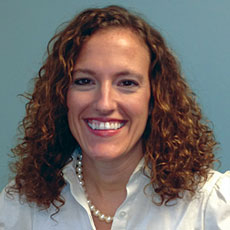
As you may have seen, the Centers for Disease Control and Prevention has released updated statistics regarding healthcare-associated infections — a nationwide report card of sorts. For many years, healthcare institutions have been focused on different ways to decrease HAIs, as federal reimbursement initiatives loomed.
So, what does this report card tell us? We’ve come a long way, baby, but there’s still a ways to go.
From 2011 data published by the CDC: 1 in 25 patients still suffer while in our care, due to infections we caused. Seventy-five thousand families had to say goodbye to a loved one because of a healthcare-associated infection. In that year, we touched the lives of over 700,000 patients who trusted us, and we failed.
Yes, we have reduced central line infections by 44%, surgical site infections by 20%, and we should be proud of that! But, we still infect 700,000 patients every year. How many infections are okay? Who is it okay to infect? Does it matter less if it is an elderly patient at the end of life? Does it matter more if it is a mother giving birth to her first child? To these patients and their families, each and every infection matters.
So, now we’ve agreed that each infection matters and after everything we’ve done to see these decreases, what is left for us to do?
It is time to start thinking differently. From the 2011 data, the CDC reports that the most common infections were due to Clostridium difficile (C. diff) and staphylococcus aureus (including MRSA). That means a concentrated focus on these two organisms alone can lead us in several fruitful directions with significant results.
As the CDC report states, one large area in which we need to focus is antibiotic resistance, prescribing practices and consumer education. Antibiotics play a huge role in the creation of C. diff and MRSA. Antibiotic stewardship programs need to be implemented across the spectrum of healthcare. From the physician’s office, to the hospital, to long-term care, we should have a program that protects the patient from unsafe prescribing practices.
How do we do this? There must be community collaboration and provider buy-in to successfully curtail the misuse and over-use of antibiotics. The CDC recognizes that this issue is about to reach critical mass and has announced that the National Health Safety Network will begin tracking antibiotic use and antibiotic resistance in hospitals. Soon, this will likely also apply to other aspects of care as well, such as primary care, rehab and long-term care.
In addition to community collaboration, it is imperative to go back to the basics. Question whether or not we truly performing hand hygiene at the high levels our data suggests. Or even more basic: Is it being tracked in all facilities? Is hand sanitizer readily available? Are we designing safe care environments?
Facilities must work with their Infection Prevention team, or a local expert, to ensure their environment is built to deter transmission of infections, contain pathogens and human waste, and encourage healthcare providers to give care in the safest manner possible.
Going back to the basics includes reexamining what the basics are. Some accepted practices are widely out-of-date. The perfect example is the U.S. health industry’s approach to bedpans, urinal bottles and bedside commodes. Much of the developed world has rethought bedpan handling and adopted new technologies, including disinfection appliances, such as MEIKO’s TopLine, that are otherwise known as bedpan washers. Rather than nurses and staff manually washing equipment that can easily spread C. diff., soiled equipment is placed inside of a washer to be contained, cleaned and made ready for reuse.
As the CDC report states, we must go back to focusing on the basics of safe care. We know federal initiatives and mandates are just around the corner. The federal government has stepped up on a platform of care and concern for our patients. We must use this opportunity to show them — and more importantly, those for whom we care — that we have decided 1 in 25 is something we can’t live with.
Jacie Volkman, MPH, CIC, is an infection control consultant for MEIKO USA, a disinfection appliance manufacturer. She also is the director of Infection Prevention at Mission Health System and owns Safe Patient Surveys Inc., an Infection Prevention consulting company.



